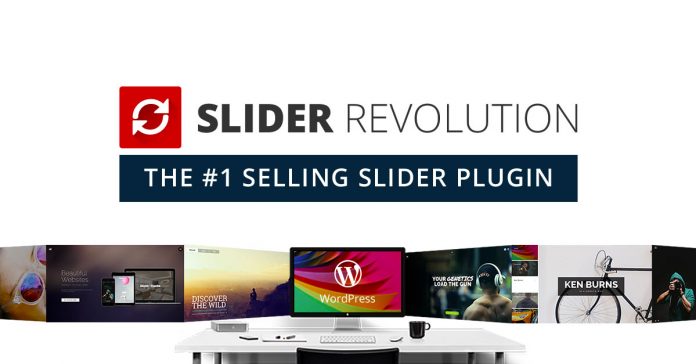A new era of sophistication began in the Image slider app when the Slider Revolution was introduced in 2012. Whether it’s a slider, hero scene, or a carousel, this JQuery Slider Plugin with its responsiveness and innovative characteristics will surely give your content an entirely alluring makeover.
The overwhelming popularity in WordPress naturally prompted the Smart DataSoft to incorporate new upgrades, a new feature with time, many people are often left out regarding them.
So here we have made a list of 7 such aspects about slider revolution, which you probably didn’t know about.
So let’s begin.
Content Summary
1. List of SVG Icons.
Suppose you chose to add a layer, upon doing so you can go for an object, thus making it the initial segment of your logo.
Here you have the option to add either text or icon or both. After adding them you can customize the width, height along with color if you desire to.
As for the text, well you have an entire family of fonts at your disposal. So make good use of them.
2] Position Snapping and Helper Grids.
I am sure you already know about this, so as we scroll to the bottom we will find helper grid with which we can choose either 10 by 10 or 50 by 50 which provides us a sort of visual guide to help position layers alongside canvas.
As you know we need more flexibility with this, for that custom is the answer. The thing about custom is that when you click the rulers, you can have your own gridlines. Here you have two icons, first is “X” (which deletes the line), the second is “Move” (here the line moves up and down).
With this, you can have a grid of your choice.
3. Layer Alignment {Grid and Slide}.
Usually, the behavior line of any layer is a grid-based, but you can change that to slide-based. After setting it for slide-based and saving all the changes, the logo which you originally chose will get placed in a corner without getting affected by things like screen size for instance.
4. Undo/Redo (changing past activity).
Let’s say you added or changed something which you thought would be a good addition, but instead turned out to be a wrong decision. What now? Well, this is where Undo comes into action.
You can find it at the bottom where it says ‘change history’, select the one which is best suited for your mistake.
Due to such streamlining of this feature, we have the liberty of doing anything then going back and reverting the act.
5. Autotime Layer Animations.
If your logo is not properly synced with the animation, it just fails to attract you or anyone else for that matter.
By choosing pop-up smooth you can sync the animations with each other after left-clicking 2 checkboxes.
Make sure the time you entered is reasonable enough for start time and for overlap when you select Set those layers to get Auto timed thus making them better synced with the rest of them.
6. Selectable Text.
If you want the text which you have been using to become selectable, then head to advanced style options, here change the option from Default to On, proceed to save the slide.
Now you will be able to select the text and paste it anywhere you like.
7. Layers with Hyperlink.
In the editor, the segment makes sure the Advanced Style Option is set at Default. In the Action tab first, add a ‘click’ link followed by a ‘simple’ link then the URL of the link.
Here you can choose for the link to open in the same window or in a different window.
As for the Link Type, choose a tag line which is ideal for SEO, for the obvious reasons.









